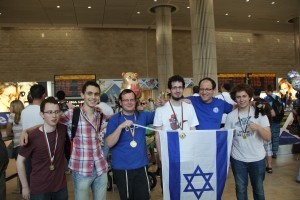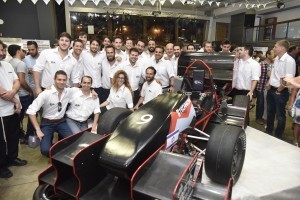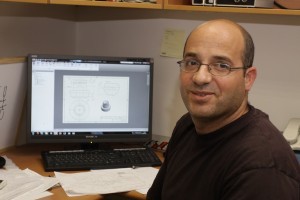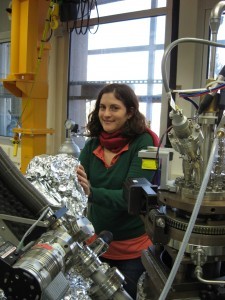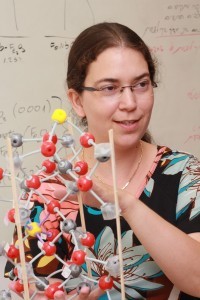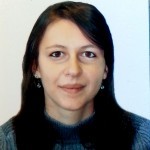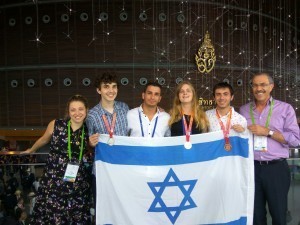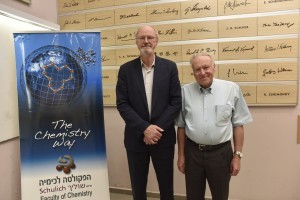Pancake Printer, Smart Luggage, Robotic Breakfast
These are just some of the projects presented by students from Technion’s Computer Science Department at a fair for innovative and creative developments based on Android and IoT programming
The annual student project fair at Technion’s Computer Science Department took place last week. At the fair, students from the Systems and Software Development and Cyber and Information Security laboratories presented their developments. The exhibition included development projects in Android, IoT, and systems related to information security and cyber.
Pancake Printer was developed by Rana Mansur, Ala Sabani, and Muram Awadi. The three students saw a video on the Internet showing how to make pancakes, and decided that 3D printing technology could be of assistance. The result is a system for printing pancakes using a servo motor, 3D printer, and dedicated algorithms. They said, “Besides having to write code we had to cope with the system’s electronic and mechanical challenges, without any of us having a background in the field.” When the projects were presented, the system worked perfectly and provided those present with delicious pancakes in a wide variety of shapes.
i-Carry is a smart luggage transportation system developed by Masha Schmidt, Iris Iluz, and Alexander Gemintern. The suitcase moves either according to instructions given via smartphone or according to the hand movements of the user, who wears a dedicated bracelet. The suitcase not only follows the user but also signals its location on the baggage claim conveyor belt at the airport.
BreakFast is a system developed by Omri Kramer, Lior Fish, and Valentin Dashinsky, which automatically makes a breakfast consisting of cereal and a cup of coffee, according to the definitions provided by the user in advance – the type of cereal, type of coffee, amount of milk and sugar, etc. The meal will be ready as soon as the user wakes up in the morning or at any other predefined time. “Since we get up a few minutes before class and don’t have time in the morning, we developed this product that will greet us with a prepared breakfast. It could save time and reduce pressure,” said Dashinsky.
i-Chess is a physical (not virtual) system that plays chess with the user, developed by Yonatan Zaretsky, Ziv Yizhar, and Roi Shachori. It’s a magical chessboard where the pieces move independently. “We were looking for a solution that would not be virtual, and on the other hand it would not require the use of robotic arms to move the pieces,” said Zaretsky. “That’s how we arrived at this solution – a system based on artificial intelligence that moves the pieces by means of electromagnetic fields located underneath the board.”
BraceletMatching is a smart bracelet developed by Yevgeny Longo, Lorraine Ramel, and Nikita Dizhor, enabling its users to meet new people according to criteria. The user enters his data (age, height, gender, hobbies, languages, etc.) and the data he wants in the other person, into a dedicated smartphone app. When two users wearing the bracelet enter a range that also allows for WiFi reception, the bracelet directs them towards each other if they are compatible according to the criteria. According to Longo, “The bracelet can be used for romantic purposes but is also suitable for meeting people at conferences and in crowded places. Inside a building the bracelet uses WiFi transmission and reception alone, but outdoors it also uses GPS.”
Darbuka, developed by Muhammed Ismail, Muhammad Rayyan, and Muad Murad, teaches the user to play the darbuka according to music files downloaded from a computer. The system can either play by itself on the basis of a file that it receives or let the user drum using the app.
i-chant was developed by Sami Abdo, Bashir Khayat, and Ibrahim Balik. This system teaches the user to play the bagpipes using lights that tell him where to place his fingers. The system gives the user grades so that he can improve, and when he no longer needs the help of the lights he is invited to play by heart in order to test himself.
Bialik is a mobile platform that helps novices write poetry. The platform helps Hebrew writers by suggesting rhymes and English writers by suggesting synonyms. In addition, the platform reports the number of words that the user wrote during the week.
Learnguage is a smartphone app that helps the user acquire a new language using existing images or new ones added by the user. The system writes the appropriate word, in the language chosen by the user, for the photographed object.
Other projects presented at the exhibition included Mambo, which helps hearing-impaired people drive; LarMe, a smart anti-theft system; 3D Pong, a Ping-Pong game on a 3D LED cube; Tanks, a multiplayer game with autonomous tanks; Voice maze, a smart car that helps improve the spelling of words; BiPo, a device that monitors attendance in class; SportTime, which keeps track of sporting event schedules and receives notifications regarding delays; TestMe, a virtual study-buddy; Toudly, which creates a spontaneous community of people with a common interest; BookASeat, a system for reserving a seat at the library; UP&GO, an easy-to-use program scheduler; Athenizer, which makes it possible to expand or reduce code in order to make it more understandable; Smart City Accessibility, which checks locations according to their accessibility; and Smart Parking, which finds the best route to a parking spot nearest the user’s destination.
“Every year our students surprise us with their original ideas, which they translate into practical developments,” said Itai Dabran, manager of the Computer Systems and Software Development Laboratory at the Computer Science Department. “This is their first significant experience in coping with complex engineering projects like the ones awaiting them in the industry.”
